Compeer Financial Shares Q3 2020 Results

Compeer Financial, a member-owned Farm Credit cooperative based in the Upper Midwest, announced financial results for the third quarter of 2020. The results show record earnings and assets, and solid overall credit quality.
Total assets were $23.7 billion as of September 30, 2020, up from $22.2 billion in assets on December 31, 2019.
“Compeer Financial is committed to providing financial solutions and insights to our clients, no matter the climate,” said Rod Hebrink, president and CEO of Compeer Financial. “COVID-19 has brought its challenges for our member-owners, but we are working in partnership with each of them to navigate the market in this challenging time. Benefits like patronage payments, interest rate conversions and the Paycheck Protection Program (PPP) loans helped many of our clients over the past six months.”
In August, Compeer Financial returned $125 million in patronage payments to member-owners. Combined with $52 million in allocated equities paid out in February, member-owners received over $177 million in patronage returns this year. This is an increase of $26 million in comparison to 2019’s patronage benefit.
“When the Board of Directors chose to increase patronage payments after strong results in 2019, we couldn’t have predicted the unprecedented challenges our member-owners and the agriculture industry would be facing this year,” said Hebrink. “This infusion of extra capital can make a big difference for our clients, especially now.”
During the third quarter, Compeer Financial reopened their office locations with COVID-19 safety guidelines in place, having closed temporarily in March out of an abundance of caution. They continue to serve clients in person, while maintaining virtual service through a variety of tools, including an upgraded online banking system, automated renewals and a mobile banking app.
Compeer also continued to provide educational opportunities to clients and others in the industry as they navigated the effects of COVID-19. In quarters two and three, Compeer financial hosted more than 25 webinars on a wide range of topics including Farm Financial Checkups, Handling Stress in the Midst of Chaos and Marketing Pork Post-COVID.
The cooperative’s net income was reported at $326.9 million for the past nine months, compared to $293 million for the same period in 2019. Net interest income was $382.4 million, up from $361.6 million. Non-interest income was $205.6 million, up from $162.3 million. This growth was driven by a $21 million increase in fee income due to conversion fees, Rural Living Solutions loan originations and PPP loan fees. Interest rate conversions have saved Compeer Financial clients over $30 million of annualized interest savings to date in 2020.
Despite the effects COVID-19 has had on the food and agriculture industries, overall credit quality remains solid as clients continue to work with Compeer Financial’s team of financial and agriculture experts on strategies for managing their particular situation. Compeer saw a small decrease in nonaccrual loans – 0.6% being nonaccrual as of September 30, 2020, compared to 0.8% on December 31, 2019. Total regulatory capital remains strong at 15.2%.
About Compeer Financial
Compeer Financial is a member-owned Farm Credit cooperative serving and supporting agriculture and rural communities. The $23.7 billion organization provides loans, leases, risk management and other financial services throughout 144 counties in Illinois, Minnesota and Wisconsin. Based in the Upper Midwest, Compeer Financial exists to champion the hopes and dreams of rural America, while providing personalized service and expertise to clients and the agriculture industry.
Compeer Financial is the third largest cooperative of the Farm Credit System, a nationwide network of lending institutions supporting agriculture and rural communities with reliable, consistent credit and financial services. Learn more about Compeer Financial.
Clock Still Ticking For Green County Dairy Farmers
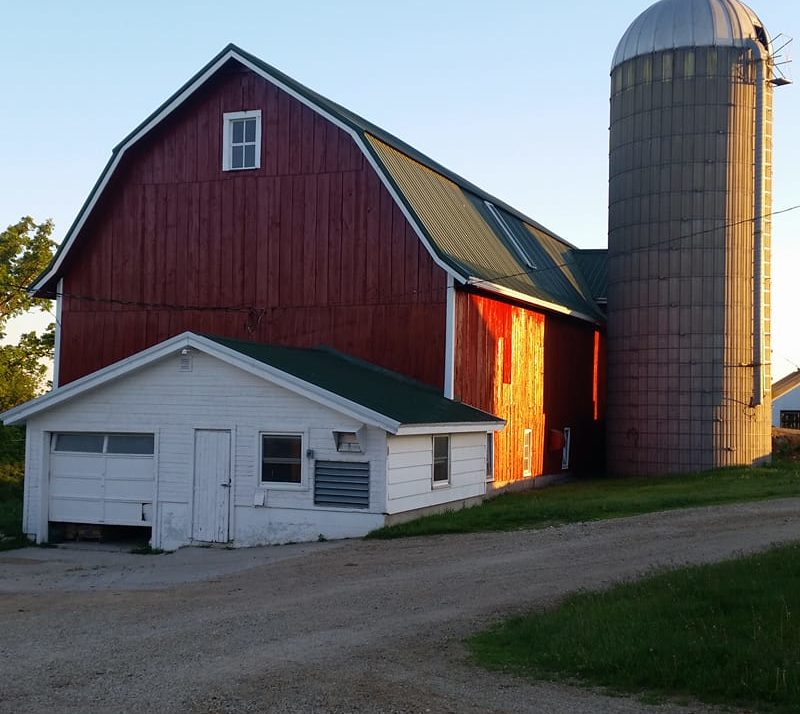
“Twenty-five dairy farmers from the Green County, Wisconsin area need a home for their milk,” says Jeremy Mayer, Cooperative President. “We’re working hard to find a home for our patron’s milk after Maple Leaf Cheesemakers, Inc, our long-term cheesemaking partner, notified us that they will stop cheesemaking at our Cooperative-owned factory in Monroe on December 7.”
The cheesemaking partner gave their 60-day termination notice on October 8, 2020. They plan to remove their cheesemaking equipment unless they agree to sell or lease back the equipment so the Cooperative can reopen the plant as soon as possible.
Pam Jahnke got an update with Will Hughes, consultant working with the dairy farmers on their business plan, and finding a home for their milk.
“The Cooperative Board has been working diligently to find partners so we can reopen the plant under a strong plan for a revitalized cheese business with a new brand,” says Mayer. “But we are running out of time. To avoid the plant being shut down for a period of time, the Cooperative needs to put its top priority on helping patrons find a buyer for their milk.”
The Cooperative has started making buyer contacts for patrons and bulk shipments of Cooperative milk. “Everyone in the cheese and dairy business knows how difficult current markets are for cheese and milk especially with a resurgent pandemic,” explains Mayer.
The Cooperative met with patrons on Friday. Everyone agrees that the Cooperative working with patrons needs to operate with the highest urgency possible beginning today to help patrons make contacts with buyers to find a new market for their milk by the December 7 shutdown.
“The Cooperative has set up a war room with our advisor, Will Hughes, so we can open all the possible doors with buyers and work one-on-one with every patron to find the best option for them,” says Mayer. The Cooperative is asking buyers to reach out to Hughes to work with him and patrons to arrange a market as soon as possible. Contact: Will Hughes at 608-239-9567 or [email protected].
Mayer knows that markets are challenging right now, and asking buyers to help is asking for goodwill. “The outpouring of support for the Cooperative’s situation has been tremendous both in Green County and across Wisconsin,” says Mayer, adding, “That support gives us options for helping farmers now and for helping reopen the plant with a new vision.”
Maple Leaf Cheese Cooperative is a farmer-owned Cooperative and cheese plant in Monroe, Wisconsin. The Cooperative comprises 25 dairy farmers and has been in business since 1910.
Alice in Dairyland to Usher in Christmas Tree Season With Virtual Tree-Cutting Nov. 18

73rd Alice in Dairyland Julia Nunes will mark the start of the 2020 Christmas tree season with a ceremonial tree cutting Wednesday, Nov. 18 at 10 a.m. on Facebook Live: https://www.facebook.com/DATCPAliceInDairyland/posts/1764991596987383 (Note: The farm will be closed to the public and media November 18.)
The event is held in mid-November each year at a different Wisconsin Christmas tree farm in partnership with the Wisconsin Christmas Tree Producers Association. In addition to the tree cutting, Nunes will take viewers on a virtual tour of Evergreen Acres in Walworth County, the 2020 host farm. Evergreen Acres is a family business owned by Ann and Bob Feucht, celebrating its 45th anniversary this year.
About Wisconsin’s Christmas tree industry
Wisconsin is the nation’s fifth-largest Christmas tree producer, with an annual harvest of more than 600,000 trees valued at more than $16 million. There are more than 850 Christmas tree farms in the state, covering approximately 23,300 acres.
About Alice in Dairyland
This event is one of numerous events leading up to the selection of the 74th Alice in Dairyland in May 2021. The finals and selection ceremony will also be based in Walworth County. Alice in Dairyland is a contract employee of the Wisconsin Department of Agriculture, Trade and Consumer Protection (DATCP). She serves one year as Wisconsin’s agricultural ambassador educating media, students and communities about the state’s $104.8 billion agriculture industry. Visit https://datcp.wi.gov/Pages/Growing_WI/AliceInDairyland.aspx for more information about the Alice in Dairyland program.
Wisconsin high schoolers embrace virtual Global Youth Institute experience

Five high school students from Wisconsin recently participated in the Global Youth Institute (GYI) as the state’s youth delegates. The institute, which took place Oct. 9-23 during the annual World Food Prize International Symposium, provides an opportunity for high school students to gather with peers, educators, researchers and policy makers from around the nation and the world to discuss challenges and solutions to world hunger and poverty. This year, because of the coronavirus pandemic, the institute and the symposium took place virtually.
“My favorite part of the Global Youth Institute would have to be the feedback and input of all the experts,” says Isabelle Klink, a student at Hartford Union High School, whose GYI presentation focused on water scarcity issues in Somalia. “I got to meet and interact with so many new people who have worked to solve the issues outlined in my [presentation]. They showed me the applications of my research and future career possibilities. These experts created the best virtual GYI experience I could ask for and I am very grateful for their insights.”
In addition to Klink, Wisconsin’s student delegates to the 2020 GYI included Andrew Alsum from Hartford Union High School; Jack Burns from Kettle Moraine Global High School; Garrett McFarren from Hartford Union High School; and Kasey Yu from Hartford Union High School.
“Two of my favorite things that we did were the roundtable discussions and the Laureate Lounges,” says Yu, whose GYI presentation focused on infrastructure issues in Somalia. “I loved the roundtable discussions because having the experts there in a live call and actually discussing your presentation and your paper was so cool. My other favorite thing was the Laureate Lounge I attended because we met with a scientist who had studied and worked with NASA on how to grow food in space. Attending the Global Youth Institute was a once in a lifetime experience.”
Wisconsin’s five delegates were selected during the sixth annual Wisconsin Youth Institute (WYI) event hosted by the UW–Madison College of Agricultural and Life Sciences this past April. Thirty-three high school students participated in the WYI event, which was also held virtually this year. To participate in the WYI, students research, write and submit a paper about a global food security issue under the supervision of a teacher or mentor.
For this year’s virtual format, WYI participants submitted videos of their paper presentations and were assigned to roundtable groups. Throughout the week students watched each other’s videos and discussed their research topics. On Friday, they attended a talk by UW–Madison professor Alfonso Morales, and then received feedback on their presentations from CALS staff and graduate students serving as roundtable experts.
“Learning about other students’ food security issues was the best part of my Wisconsin Youth Institute experience,” says Burns, whose presentation focused on education in the Dominican Republic. “The passion [my fellow participants] had for their topics shined through in their video submissions. Their drive to learn about topics of global importance, as well as brainstorm ways to solve them, was inspiring. I was able to learn about issues in every pocket of the world. It was a truly rewarding experience.”
Educators who participated in the Global Youth Institute experience this year were Paul Coffin from Hartford Union High School; Erica Dimka from Kettle Moraine Global High School; Kevin Martin from Hartford Union High School; Bill Schliewe from Hartford Union High School; and Ben Skifton from Hartford Union High School.
“My favorite thing was seeing and hearing the students get involved in globally significant issues and be able to discuss those with experts, says Dimka, who teaches English. “Plus the seminars and other live events that students could participate in virtually.”
Plia Xiong, prospective student services coordinator for UW–Madison CALS, helped coordinate and oversee the WYI as well as Wisconsin’s participation in the GYI.
For more information, visit the Wisconsin Youth Institute website at https://go.wisc.edu/wisconsinyouthinstitute or contact Plia Xiong at [email protected] or (608) 265-2051.
Compeer Financial Accepting Grant Applications for General Use Grant Program

Compeer Financial’s Fund for Rural America, the Farm Credit cooperative’s giving program, is now accepting applications for its General Use Grant Program. With $10,000 available per organization each year, the grant application is open until December 4, 2020.
General Use Grants are used to fund programs and organizations whose work aligns with Compeer Financial’s mission of enriching agriculture and rural America. Applications will be evaluated based on their alignment with this mission, as well as one of the following focus areas:
- Education: educating young, beginning or future farmers
- Environment: maintaining or improving the quality of the rural environment
- Technology: supporting the advancement and use of technology for the benefit of farmers and rural communities
- Quality of life: programs or initiatives that enhance the quality of life for farmers and rural communities
To date, the General Use Grant Program has awarded more than $1 million to 195 different groups in Illinois, Minnesota and Wisconsin, directly impacting the lives of nearly 1.2 million people.
Applicants located in Compeer Financial’s 144-county territory will be eligible to apply for up to $10,000 per year for project or program support, technical assistance, general operating support or equipment. For more information visit Compeer.com/giving-back.
About the Fund for Rural America
The Compeer Financial Fund for Rural America is the corporate giving program of Compeer Financial, structured to support Compeer Financial’s mission to enrich agriculture and rural America. Compeer Financial’s Board of Directors has dedicated one percent of annual net earnings to support the Fund’s focus areas of agricultural advocacy and development, agriculture education, cooperative initiatives, rural development and community enrichment; and youth engagement. The Fund is managed by a Board of Trustees, made up of team members from Illinois, Minnesota and Wisconsin and members of the Compeer Financial Board of Directors. More information about opportunities available through the Fund can be found at Compeer.com/giving-back.
About Compeer Financial
Compeer Financial is a member-owned Farm Credit cooperative serving and supporting agriculture and rural communities. The $23.4 billion organization provides loans, leases, risk management and other financial services throughout 144 counties in Illinois, Minnesota and Wisconsin. Based in the Upper Midwest, Compeer Financial exists to champion the hopes and dreams of rural America, while providing personalized service and expertise to clients and the agriculture industry.
Compeer Financial is the third largest cooperative of the Farm Credit System, a nationwide network of lending institutions supporting agriculture and rural communities with reliable, consistent credit and financial services. Learn more about Compeer Financial.
State’s Corn Forecast Exceeds 500 Million Bushels
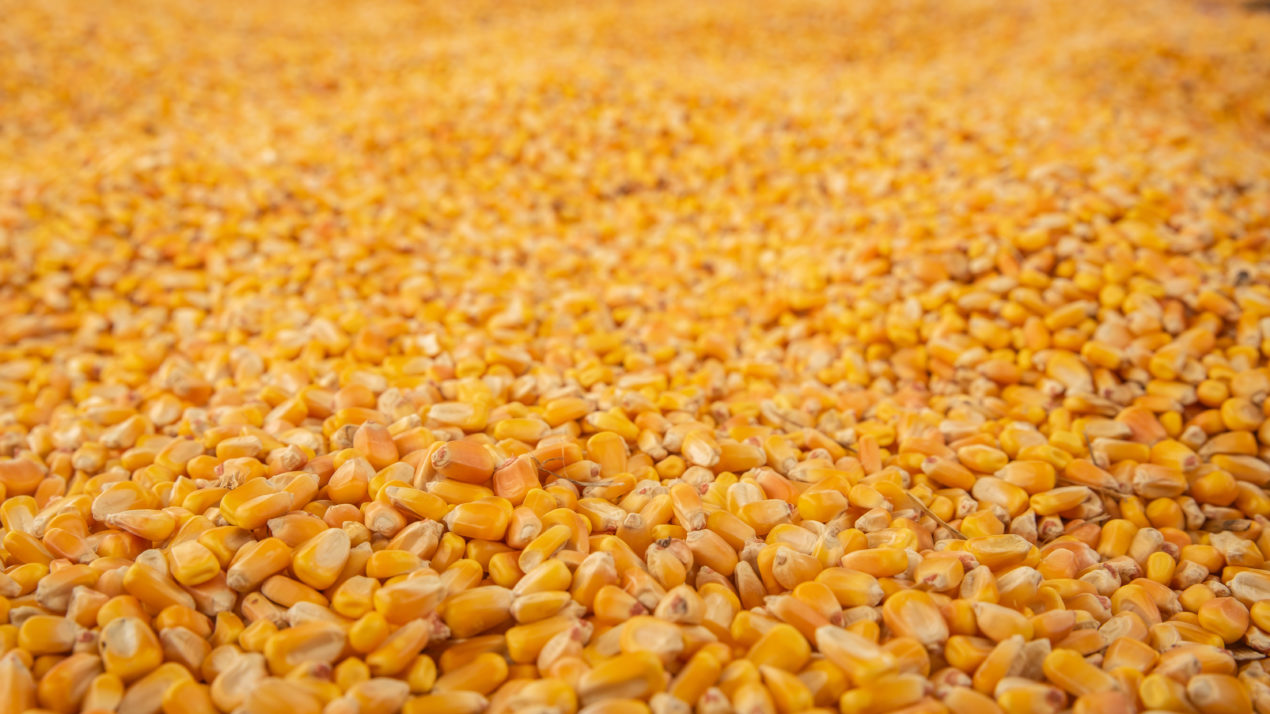
Wisconsin corn production is forecast at 534 million bushels according to the latest USDA, National Agricultural Statistics Service – Crop Production report. Based on conditions as of November 1, yields are expected to average 184 bushels per acre, down 2 bushels from the October 1 forecast but up 18 bushels per acre from last year. Corn planted acreage is estimated at 4.00 million acres. An estimated 2.90 million acres will be harvested
for grain.
Soybean production is forecast at 105 million bushels. The yield is forecast at 53.0 bushels per acre, down 2.0 bushels from the October 1 forecast but up 6.0 bushels per acre from last year. Soybean planted acreage is estimated at 2.00 million acres with 1.98 million acres to be harvested.
Potato production is forecast at 28.3 million hundredweight (cwt), down 1% from 2019. The potato yield is forecast at 410 cwt per acre, unchanged from 2019. Wisconsin potato growers expect to harvest 69,000 acres, down 1,000 acres from last year.
The forecasts in this report are based on November 1 conditions and do not reflect weather effects since that time. The next corn and soybean production estimates will be published in the Crop Production – Annual Summary report which will be released January 12, 2021.
Tractor Sales Remain Positive
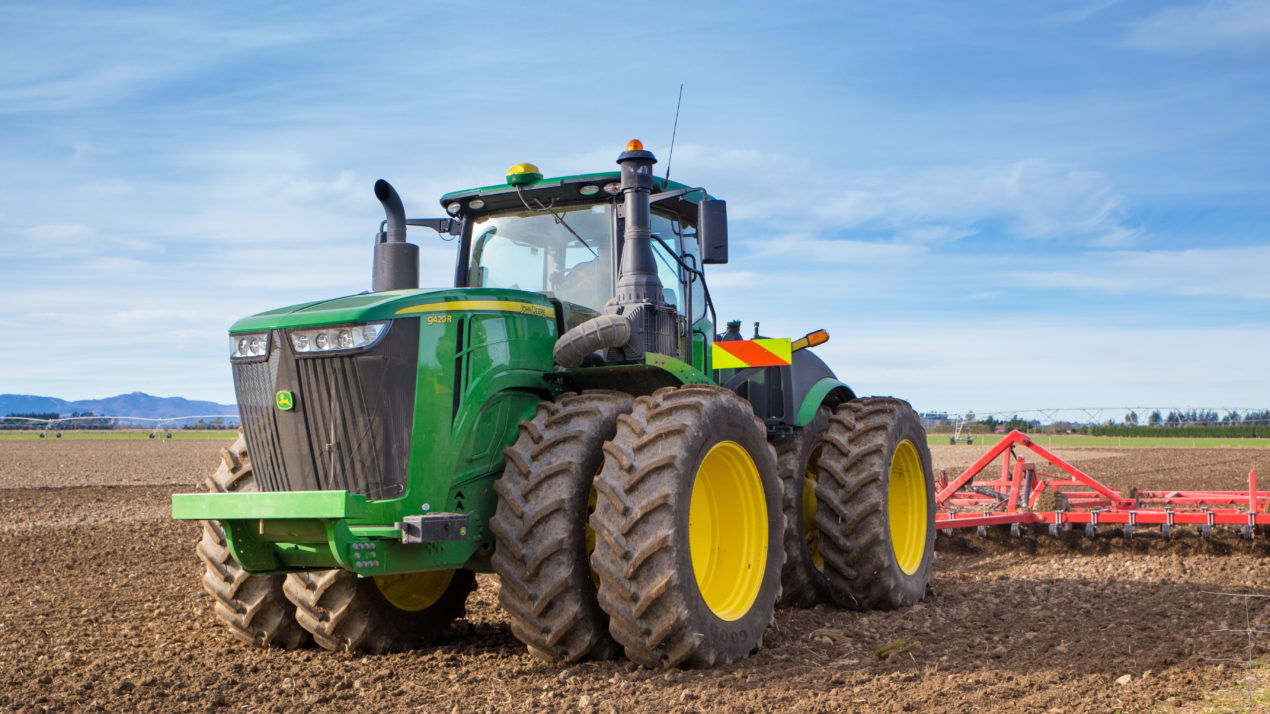
Overall farm tractor unit sales continue their growth across North America in October 2020 despite a small pause in larger units in Canada according to the latest data from the Association of Equipment Manufacturers (AEM).
U.S. total farm tractor sales rose 18.1 percent in October compared to 2019 while U.S. self-propelled combine sales grew 14.8 percent. U.S. four-wheel-drive units grew for the third month in a row in October, up 22.8 percent to 635 units, putting year-to-date segment sales in the black for the first time this year, now up 1 percent. 100+hp also grew in October, up 9.7 percent, finally bringing big units barely into positive territory, now up 0.2 percent YTD. Total YTD farm tractors out the door are up 15.1 percent in 2020, while combines are now up 5.5 percent on the year.
For Canada, October tractor sales saw major growth in the sub-40hp range, carrying overall tractor sales to a 12.8 percent growth for the month and 9.6 percent YTD, while 40-100hp and 100+hp units had small declines of 1 percent and 3.3 percent respectively. Four-wheel-drive units stayed flat for the month. Self-propelled combines grew 3.1 percent for the month, while YTD unit sales remain 7 percent behind their 2019 pace.
“We’re glad to see aggregate North American tractor and combine sales stay above the 5-year trend line,” said Curt Blades, Senior Vice President of Ag Services at the Association of Equipment Manufacturers. “These latest numbers, combined with the recent bump in commodity prices, point to the potential for a strong finish to equipment sales for 2020.”
The full reports can be found in the Market Data section of the AEM website under Ag Tractor and Combine Reports.
Dairy Groups Push Back Against Anti-CAFO Resolution
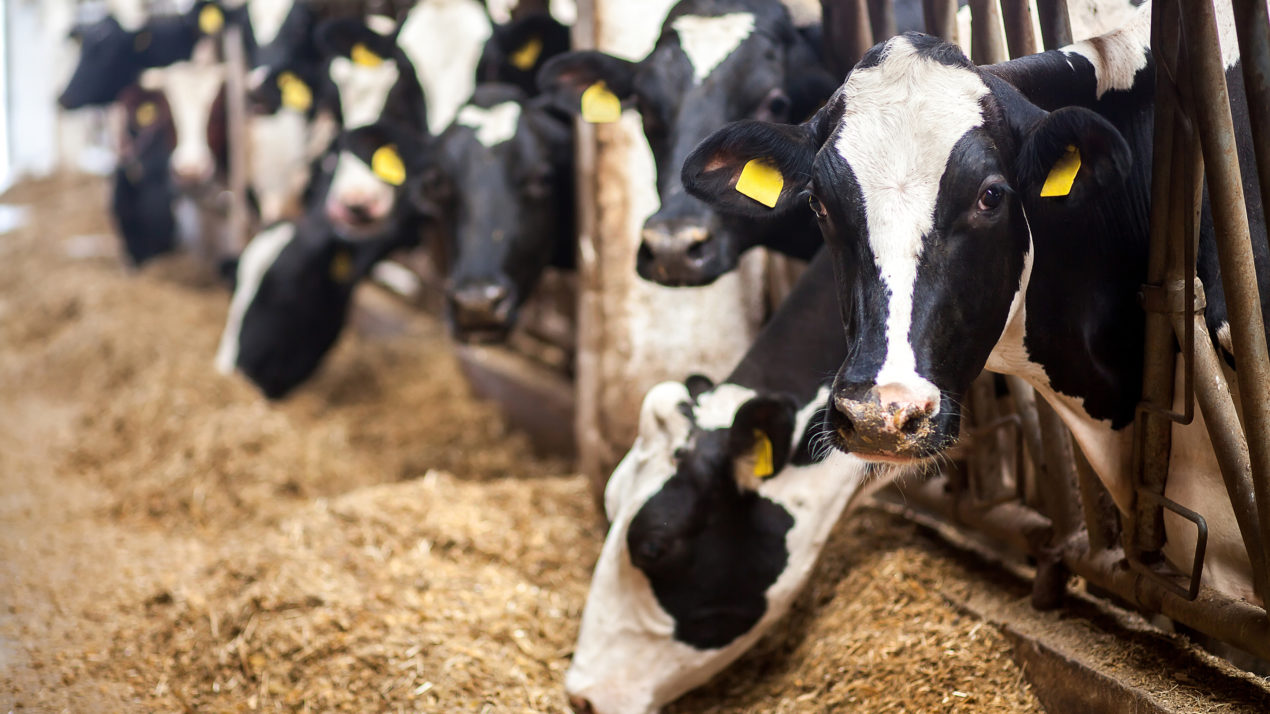
The Dairy Business Association and Edge Dairy Farmer Cooperative are telling Polk County officials there is a more effective way to address concerns about larger livestock farms than piling on regulations or banning the farms all together.
Polk County’s Health and Human Services Committee on Tuesday is scheduled to consider a resolution that deals with potential new regulations on so-called CAFOs, farms with at least 1,000 animal units. A farm can pass that threshold with 600-700 cows, especially if raising heifers and calves.
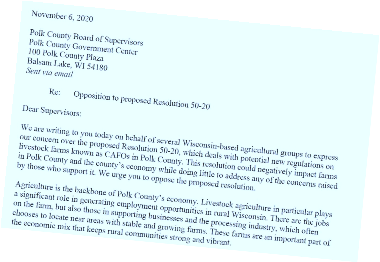 |
“There is a better path forward than the one outlined by the proposed resolution,” DBA and Edge, joined by five other agricultural groups, wrote on Friday in a letter to members of the Polk County Board of Supervisors.
“Farmers want to be good neighbors. In Wisconsin, it is very likely that a CAFO owner lives in the same community as the farm. Indeed, most of them are owned by families that have been in the area for generations. These farms and families are not the enemy. Instead, it makes more sense for the county to work with its farms on shared goals,” the groups wrote.
The other organizations joining in the letter were Polk County Farm Bureau, Wisconsin Association of Professional Agricultural Consultants, Wisconsin Cattlemen’s Association, Wisconsin Corn Growers Association and Wisconsin Pork Association.
The county resolution does not spell out the end goal, but it comes on the heels of an attempt by some in Polk County government to ban certain types of larger farms.
The ag groups pointed out that in nearby St. Croix County, a workgroup was formed of farmers, government officials and other private residents to identify environmental improvement areas. The groups also said that elsewhere around the state, governments are partnering with local farmers to work on watershed-specific projects. That collaborative approach is having measurable positive effects on soil health and water quality.
“Passing an antagonistic resolution will not help. If anything, it could dissuade farmers from engaging with the county,” the letter states. “We hope Polk County will decide to move forward together with its farmers for the good of everyone concerned.”
WCMA Now Accepting Applications for Student Scholarships Worth $15,000 in 2021

The Wisconsin Cheese Makers Association (WCMA) is now accepting applications for five student scholarships worth a total of $15,000.
“WCMA recognizes education is a key factor in the strengthening and growth of the dairy industry,” WCMA Executive Director John Umhoefer said. “Our organization is happy to invest in the next generation of dairy leaders through our scholarship programs.”
In 2021, two students will be awarded the WCMA Myron P. “Mike” Dean Cheese Industry Student Scholarship, worth $3,000 each. Any employee or child of an employee of a WCMA dairy manufacturing, processing, or marketing member company may apply.
Employees or children of employees at WCMA supplier member companies may apply for the WCMA Cheese Industry Supplier Student Scholarship. Three students will receive scholarship awards of $3,000 each.
Preference for both scholarship awards will be given to candidates pursuing degrees and careers connected to the dairy industry. Well-qualified candidates will be currently attending a college, university, or technical school in the United States, or registered to attend a qualifying school.
Applicants must supply transcripts, a letter of recommendation, and a completed application form by Wednesday, February 17, 2021. Forms may be found at WisCheeseMakers.org, or can be directly requested from WCMA Office & Member Service Manager Sara Schmidt at 608-217-2181 or via email at [email protected].
Successful applicants will be announced in March 2021, with awards made in September.
Scuppernong AEA Layers Preservation Protections to Protect Farming Communities
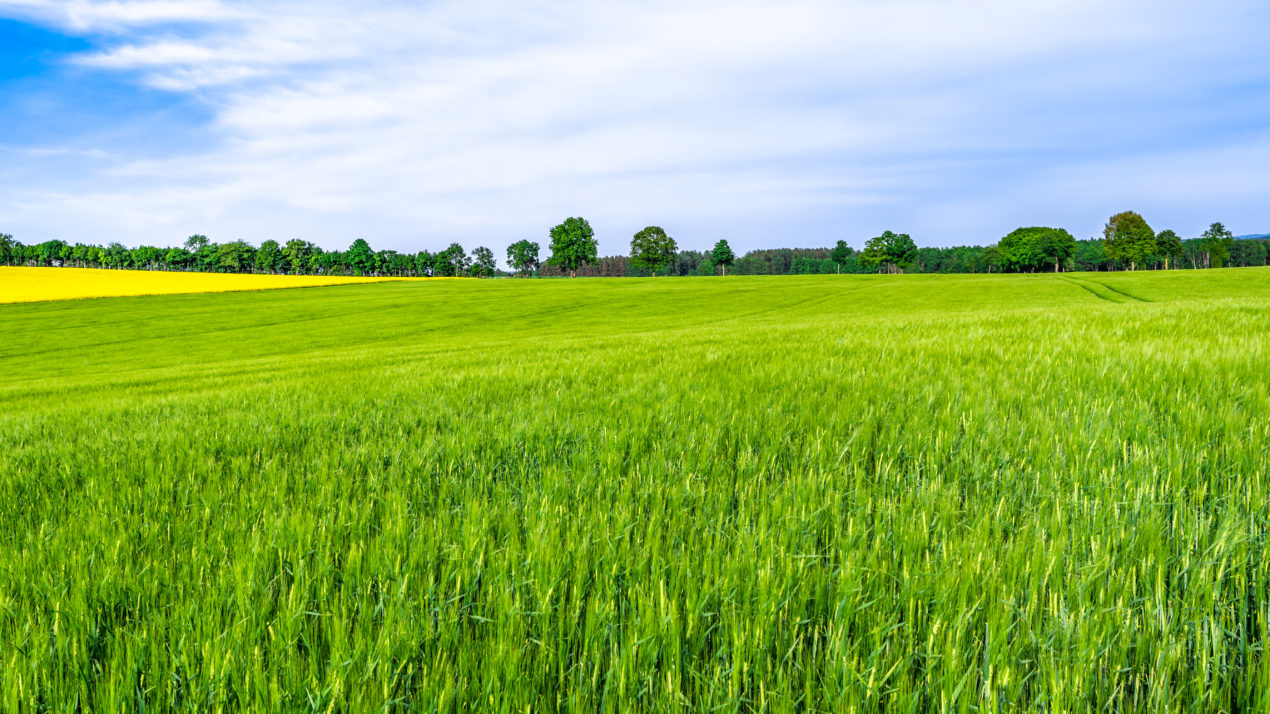
The Scuppernong agriculture enterprise area (AEA) was designated as an AEA in 2011 after the state’s first petition cycle. It includes 13,859 acres located in the municipalities of Cold Spring, Hebron, Palmyra, and Sullivan in southeastern Jefferson County. The community uses comprehensive zoning, conservation easements, nutrient management planning, and the Scuppernong AEA to meet the following goals:
- Preserve local farmland for future use
- Promote clustering of farms to strengthen the local farm economy and agribusinesses
- Educate the community about the importance of local agriculture
- Protect the area’s groundwater resources
The Jefferson County Land and Water Conservation Department works with landowners in the Scuppernong AEA in a variety of ways to maximize the benefits of participating in the farmland preservation program and explore soil health practices. For example, the county offers classes each year on nutrient management planning for both new and experienced farmers. The county also provides individualized planning, technical support, and cost sharing to help offset the costs of implementing a nutrient management plan.
Additionally, Scuppernong AEA landowners who already participate in the program through zoning may be eligible to offset their costs further using the farmland preservation tax credit. By signing a farmland preservation agreement on lands within the AEA, the landowner devotes the covered land to agriculture and agricultural accessory uses for 15 years while ensuring the land meets state conservation standards. In return, the income tax credit increases from $7.50/acre to $10/acre and protects the land for future use.
To learn more about the Scuppernong AEA, visit https://datcp.wi.gov/Pages/Programs_Services/DesignatedAEAs.aspx. To find out if your farmland is located in this AEA, to sign a farmland preservation agreement, or to learn more about conservation initiatives or resources in Jefferson County, contact Nancy Lannert of the Jefferson County Land and Water Conservation Department at (920) 674-7110 or [email protected].
About AEAs and Farmland Preservation
Agriculture enterprise areas provide a path for landowners to create their own nutrient management plan, explore new conservation practices, and sign a farmland preservation agreement. DATCP has authority to designate up to 2 million acres for AEAs. There are currently 40 AEA designations in the state with almost 1.4 million acres in 112 towns, 27 counties, and the Bad River Reservation. Since 2010, over 1,500 Wisconsin farmland owners supported petitions for designation of an AEA.
To learn more about AEAs, https://datcp.wi.gov/Pages/Programs_Services/AgriculturalEnterpriseAreas.aspx. To start or join a current AEA, contact your county land conservation department. To learn more about the Farmland Preservation Program and to read the latest Farmland Preservation Report, visit https://datcp.wi.gov/Pages/Publications/FarmlandPreservation.aspx.

